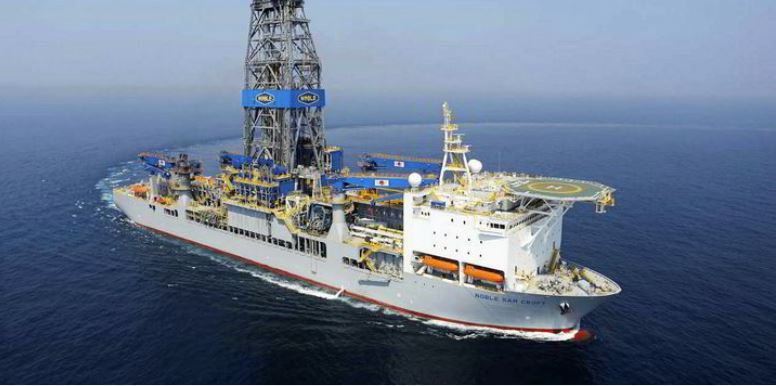US independent and partner Total to drill appraisal and new exploration probes next year after latest wildcat success
US independent Apache is lining up appraisal and exploration drilling programmes off Suriname next year after unveiling what it called a “major” oil discovery, with test results suggesting it is the best well drilled to date on Block 58.
Kwaskwasi-1, the third successive discovery well on the block, was drilled in 1000 metres of water, probing to a depth of about 6645 metres and testing hydrocarbons in multiple stacked targets in Upper Cretaceous-aged Campanian and Santonian intervals.
Preliminary fluid samples and test results indicate at least 278 meters of net oil and gas condensate pay in two intervals.
The shallower Campano-Maastrichtian interval contains 63 metres of net oil pay and 86 metres of net volatile oil and gas condensate pay, according to preliminary results.
Teams are still logging wireline data on the deeper Santonian reservoir, which contains 129 metres of net hydrocarbon pay.
Based on samples taken, the API oil gravities are between 34 and 43 degrees.
“This is the best well we’ve drilled in the basin to date, with the highest net pay in the best quality reservoirs,” said chief executive John Christmann.
The breakthrough Maka Central-1 discovery was announced in January, almost simultaneously with the farm-in agreement that gave French supermajor Total a 50% stake in the block.
Both Maka Central-1 and the subsequent Sapakara West-1 find were described by Apache as highly significant discoveries in terms of quality — at 35 to 45 degrees API — and volume.
“While we have a lot more work to do, a discovery of this quality and magnitude merits a pace of evaluation that enables the option of accelerated first production,” Christmann said of the latest find.
Like the previous two discoveries, Kwaskwasi-1 was drilled using the drillship Noble Sam Croft. The successful drilling campaign has defied the logistical challenges presented by Covid-19.
Once finished at Kwaskwasi-1, the rig will move on to the fourth prospect in Block 58 — Keskesi — which is located approximately 14 kilometers south-east of Sapakara West-1.
The Keskesi exploration well will test oil-prone upper Cretaceous targets in Campanian and Santonian horizons.
Apache has identified at least seven distinct play types and more than 50 prospects within a thermally mature play fairway on the block.
“[These] very encouraging results confirm our exploration strategy in this prolific zone, which targets large volumes of resources at low development costs,” said Kevin McLachlan, senior vice president of exploration at Total.
According to the terms of the farm-in agreement with Apache, Total will take over as operator of the Block after the drilling of the fourth well.
In early 2021 the partners are planning an appraisal campaign to characterise the 2020 discoveries, along with additional exploration drilling, Total said last week.
Interest in the eastern side of the Guyana-Suriname basin is increasing as a result of Apache’s streak of success.
Malaysian state oil company Petronas has just hired Maersk Drilling’s semi-submersible Maersk Developer to spud the Sloanea-1 prospect on Block 52 during the second half of the year, with ExxonMobil as a 50:50 partner.
Anglo-Irish independent Tullow Oil is planning to drill the Upper Cretaceous prospect Goliathberg-Voltzberg North on Block 47 in the first quarter of next year and said this week that it will shortly announce a rig contract.
US independent Hess is expected to spud a first well on Block 59 next year, with ExxonMobil and Equinor as non-operating partners.
Hess also has a non-operating stake in Block 42, where Kosmos Energy is also planning to drill next year.
In neighbouring Guyana, Hess also reported that commissioning of the water-injection system on the Liza Destiny floating production, storage and offloading unit will enable the vessel to reach its capacity output of 120,000 barrels per day of oil in August.
Phase two of the ExxonMobil-operated Liza development — which will utilise the Liza Unity FPSO, with an expected capacity of 220,000 bpd — remains on target to achieve first oil in early 2022, Hess said last week.
ExxonMobil also put two drillships back to work in Guyana after Covid-19-related travel restrictions in the country forced an unscheduled halt of operations.
The Stena Carron recently completed appraisal drilling at Yellowtail-2 and identified two additional high quality reservoirs, while the Noble Don Taylor began drilling the Redtail exploration well, two kilometres west of Yellowtail-1, in July.
The other two drillships, the Noble Bob Douglas and the Noble Tom Madden, are drilling and completing Liza Phase 1 and Phase 2 development wells, respectively, Hess said.
—
Source: Upstream | This text was excerpted from the media outlet cited on August 7, 2020 and is provided to Noia members for information purposes only. Any opinion expressed therein is neither attributable to nor endorsed by Noia.






